What a memorable day!
We began our day standing on the Mt. of Olives. From here, Jesus looked out over the city and wept. For they did not know the time of their visitation (Luke 9: 44) From this very place Jesus ascended back to the Father after the resurrection. ” And while they looked steadfastly toward heaven, as He went up, behold two men stood by them in white apparel. Who also said, “Men of Galilee, why do you stand gazing up into heaven? This same Jesus who was taken up from you into heaven will so come in like manner as you saw Him go into heaven.” (Acts 1:10-11) NKJV
The Mount of Olives or Mount Olivet is a mountain ridge east of and adjacent to Jerusalem’s Old City. It is named for the olive groves that once covered its slopes. What a view!
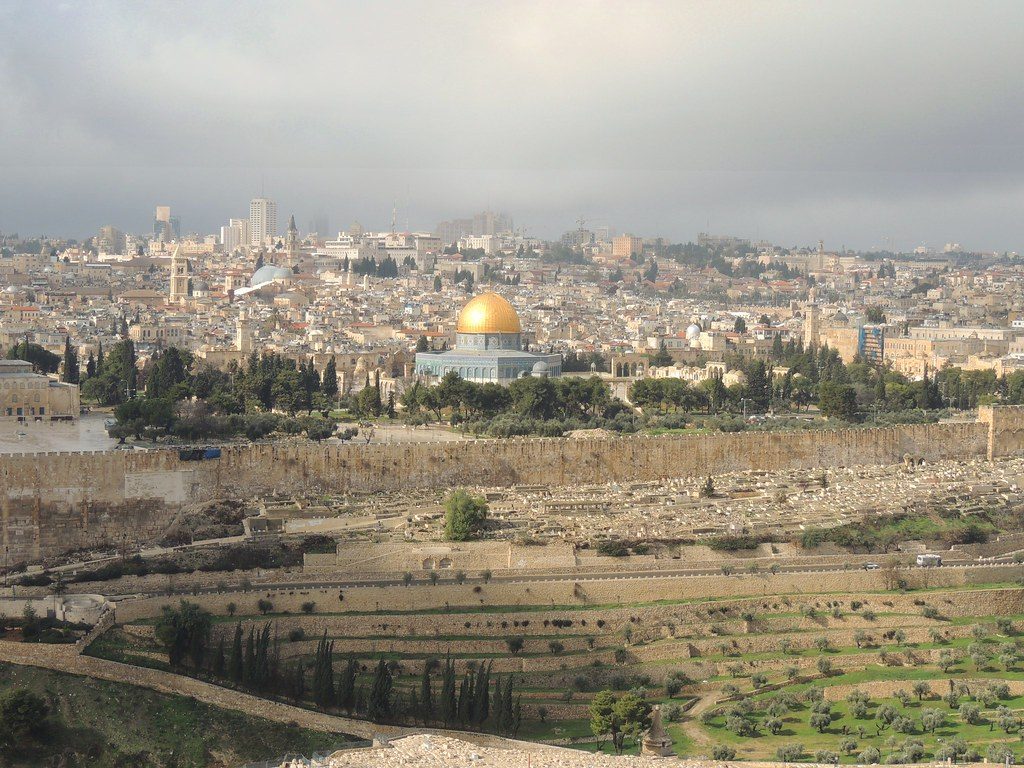
After we all had an opportunity to take our photos and videos of the fabulous panoramic view of the Old City, we began our descent to the Garden of Gethsemane. Walking down the very road that pilgrims through the ages traveled on their way to the Holy City, we passed a Jewish cemetery on the slopes of the Mount of Olives. This is the largest and holiest cemetery in the Jewish world, containing some 70,000 graves.
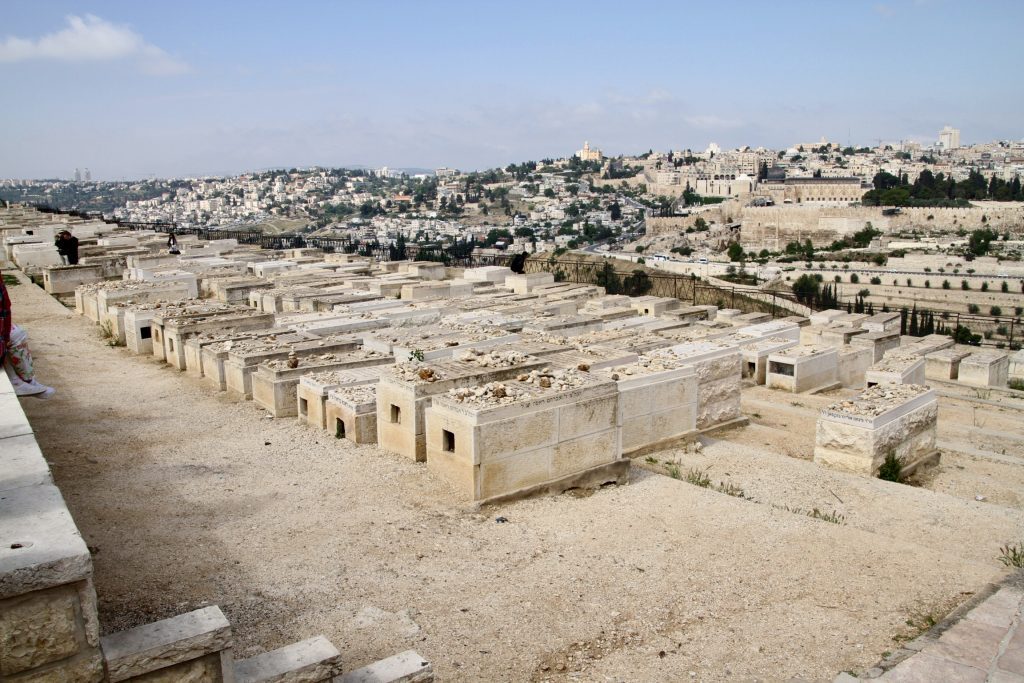
Notice in the picture below, the smaller broken slabs placed on top of the larger stone markers. We were told that in Israel’s War of Independence in 1948 the Jordanians took control of the Old City and surrounding areas including the Jewish cemetery on the Mt of Olives. They destroyed many of the stone markers using some of them to level roads. The Six Day War of 1967, the Jordanian army was pushed out of Jerusalem and the city was reunited as the capitol of the Jewish State. Wherever remains of original markers in the cemetery were found, they were then placed on top of the new markers at the original burial sites. The tiny pieces of stone on some of the slabs were left by friends/family as a mark of their visit to the individual grave.
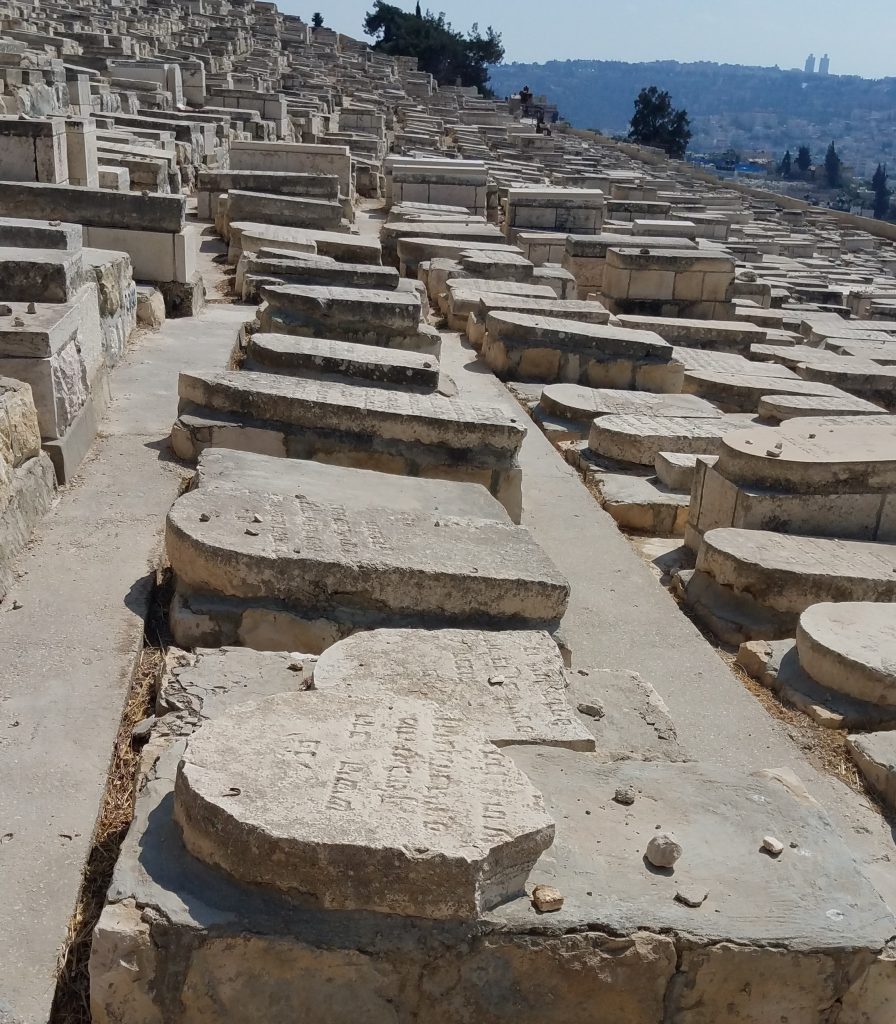
Garden of Gethsemane-
We could hardly believe we were about to enter the Garden of Gethsemane. This is the place where Jesus agonized on the night He was about to face his arrest and crucifixion. It is an olive grove.
Gethsemane. It is located at the foot of the Mount of Olives and across from the Kidron Valley. It is an olive grove. Next to it is the Church of All Nations in which an exposed bedrock is said to mark where Jesus prayed before he was arrested. It is an amazing testimony to the persistence of the olive tree. Ancient Jewish historian Josephus describes how when the Romans destroyed Jerusalem in 70 AD they cut down and destroyed all the trees surrounding the city. The olive tree would not die, but live. It produced new life and some of the roots have been carbon dated to 2,000 years old. This is where the unfolding of the drama of Holy Week really began. And we were there! And it became more real than ever before.
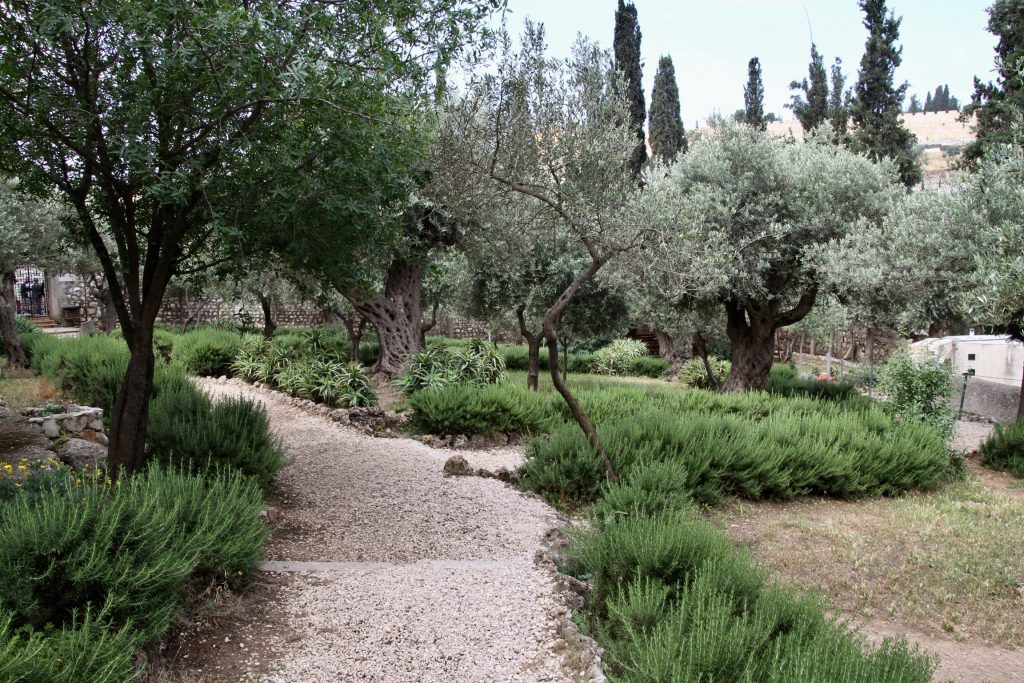
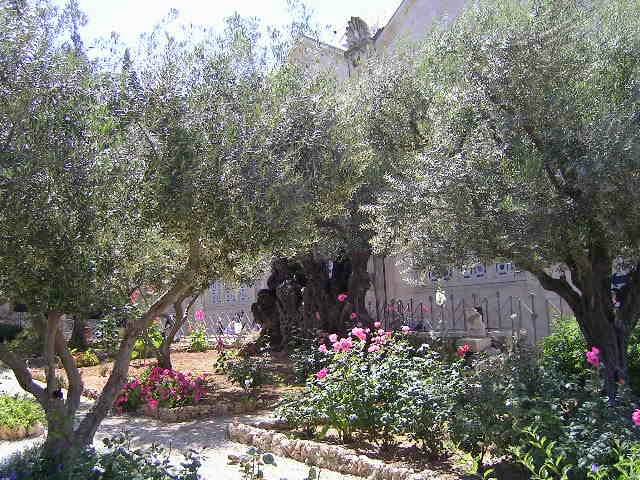
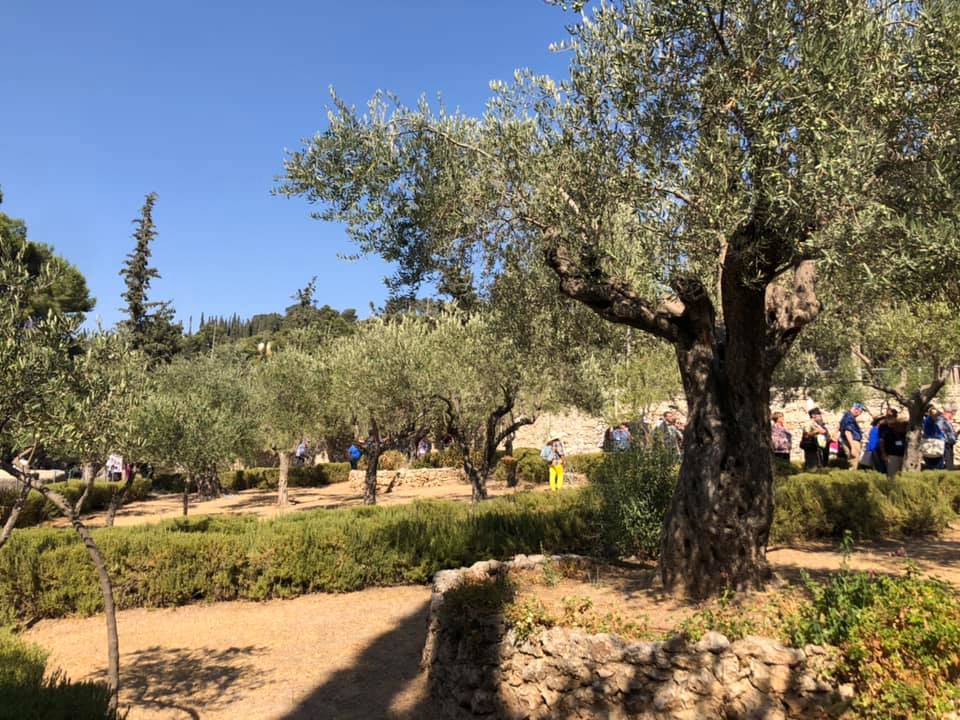
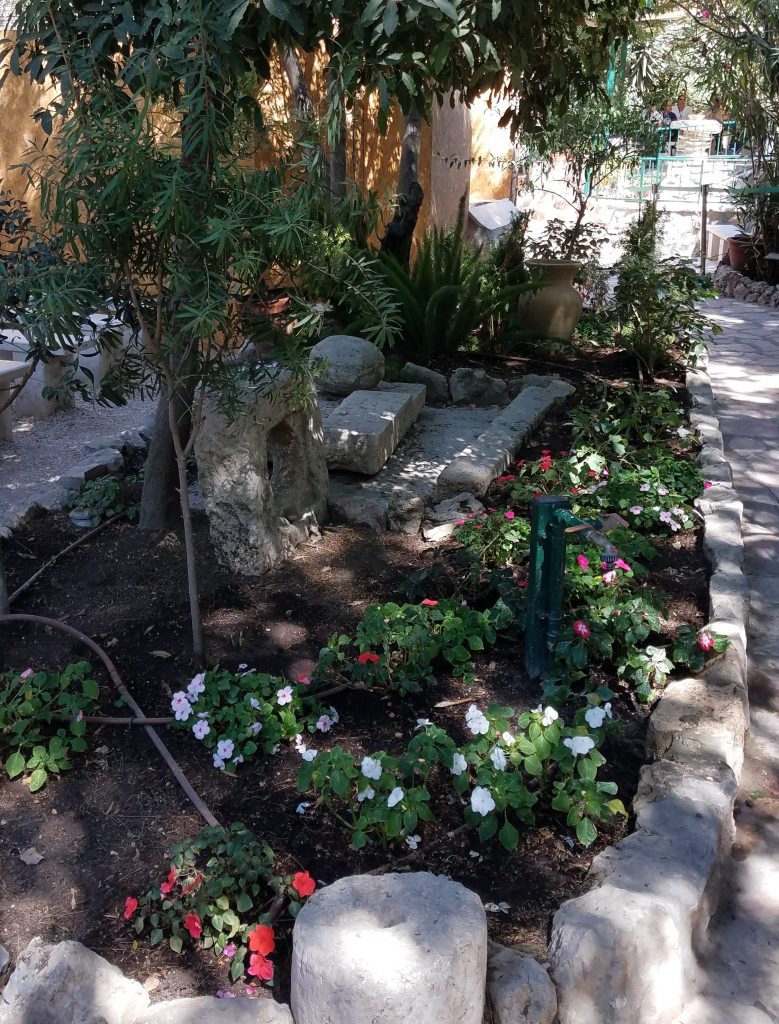
The Church of All Nations, standing near the foot of the Mount of Olives in Jerusalem, is built over the rock on which Jesus is believed to have prayed in agony the night before he was crucified. It is right across the street from the Garden of Gethsemane.
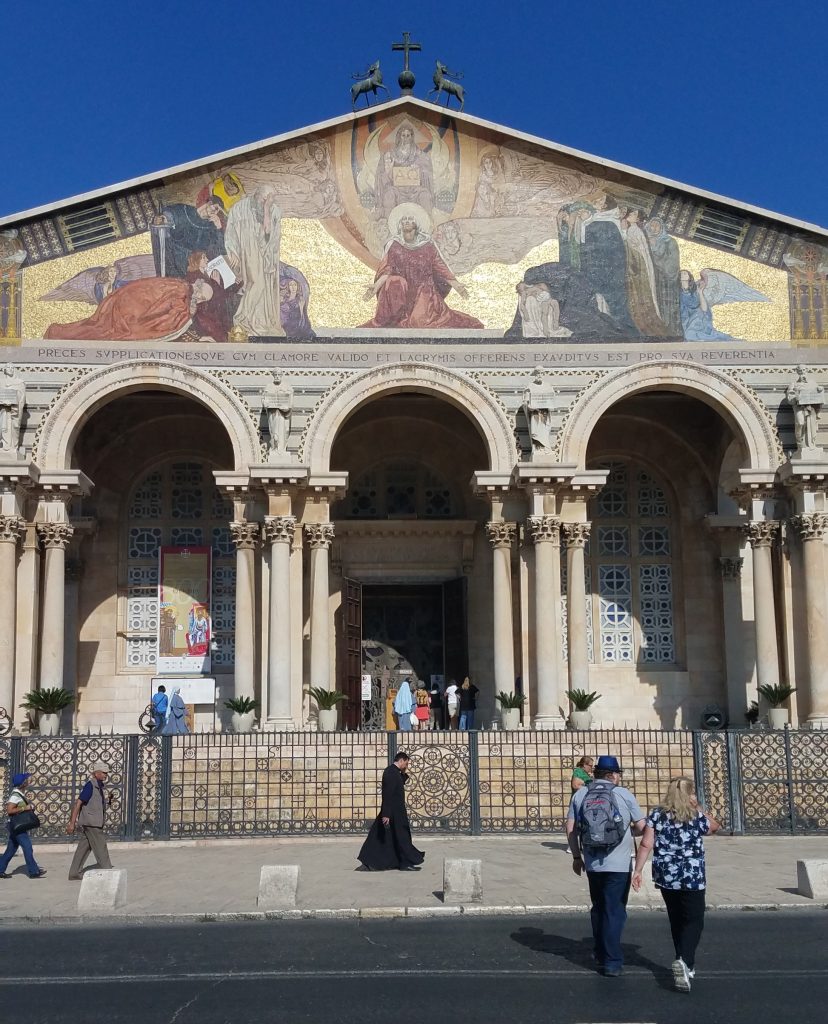
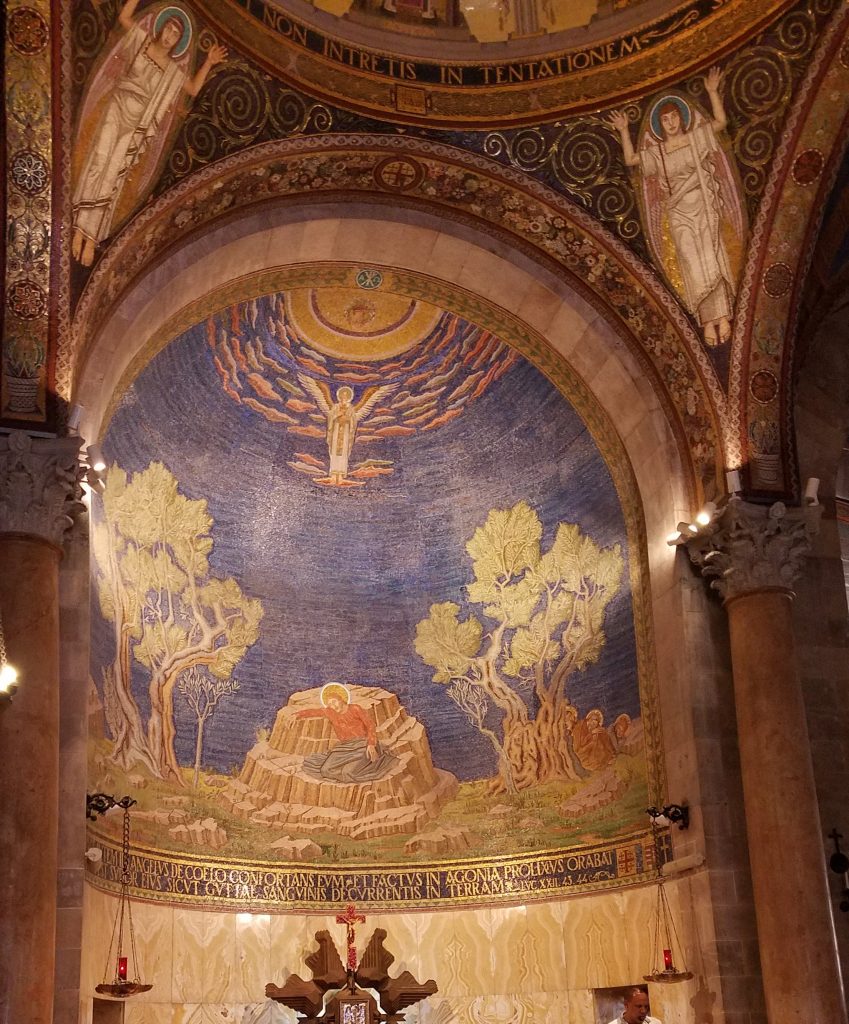
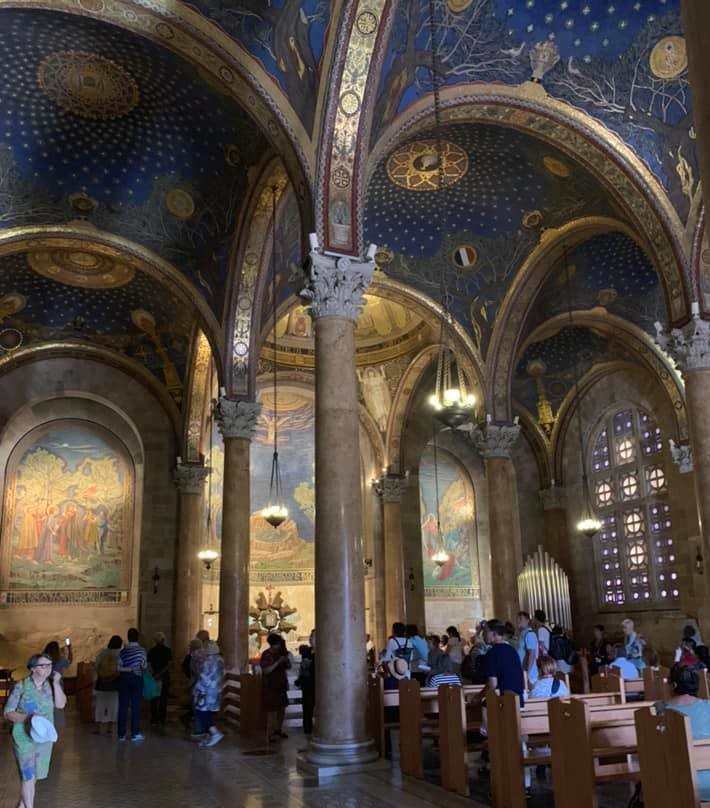
The Garden Tomb
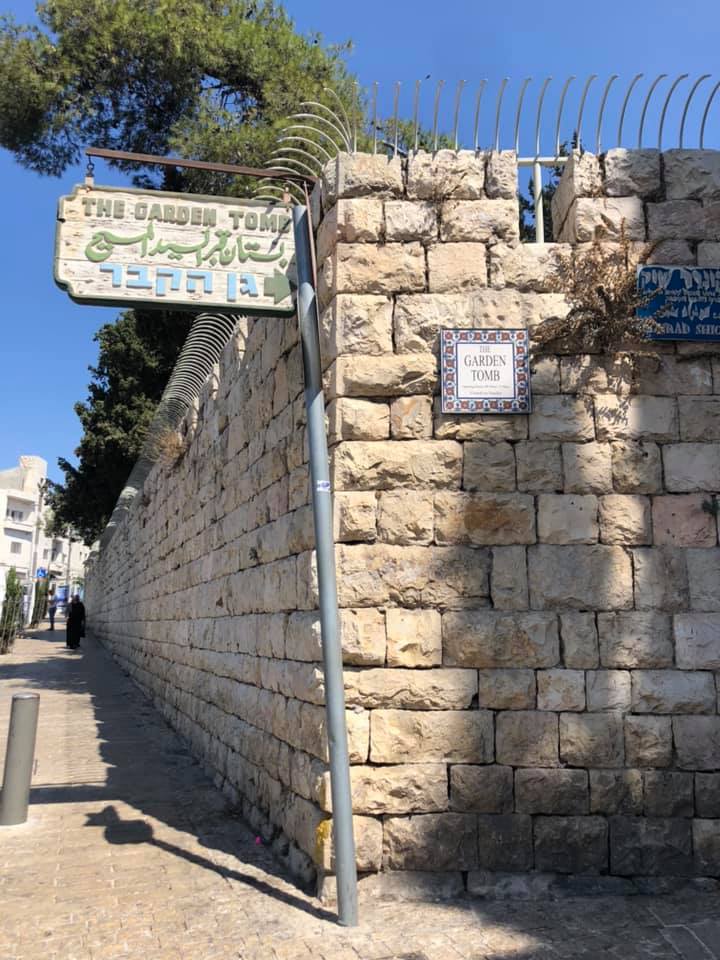
Outside the walls of the Old City near the Damascus gate is the Garden Tomb,
also known as Gordon’s Tomb. Named after British Major-General Charles
Gordon, an amateur archaeologist, who believed that he had found the location
of the crucifixion and burial of Jesus. Here is a rugged rock face that he
believed fit the description of the “Place of the Skull” with a tomb hewn
from the rock. Close by he found a cistern and wine press that suggested
that the place was once part of a garden. Archaeologists debate the
authenticity of his conclusions. However, Gordon’s Tomb offers a tranquil
setting with winding paths and alcoves nestled among the flowering greenery
offering visitors a quiet place to sit and reflect on the crucifixion, death
and resurrection of Jesus.
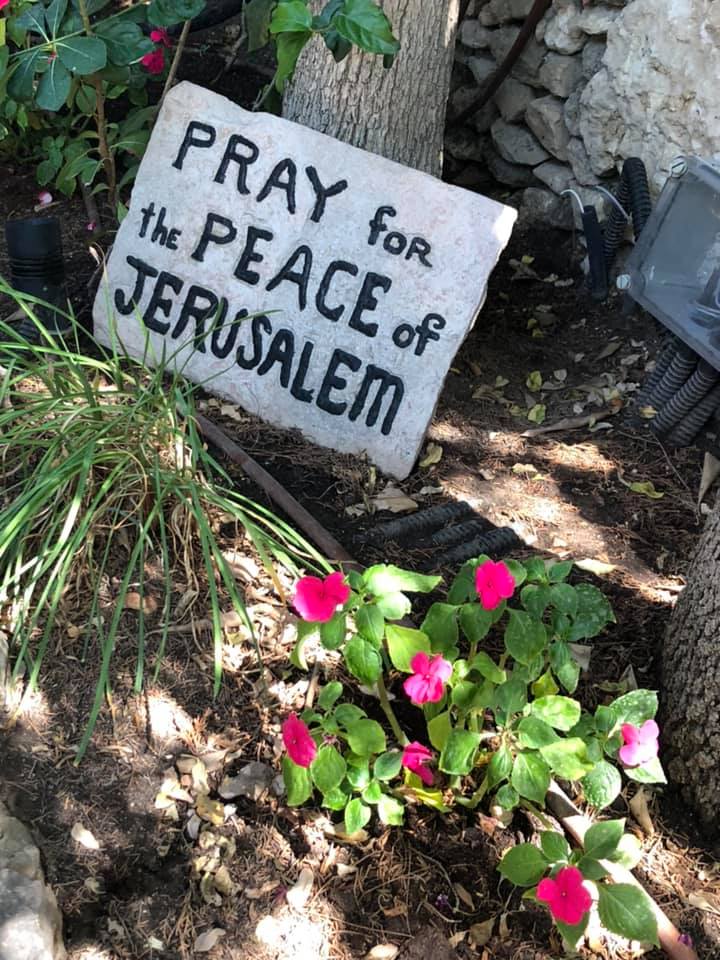
Each bus found an area to sit and enjoy the solitude of the garden. We
heard a wonderful presentation by one of the volunteers from the Christian
foundation based in England. Though we’ve all read the Easter story
countless times, sitting there in Jerusalem so close to where it all
happened, was a powerful experience. We were then brought to the tomb so
that each of us could descend the steps to the burial tomb and looked in. It
was empty! A quick restroom stop and we were on our way. What a contrast
between the Church of the Holy Sepulcher with the noise and congestion and
Gordon’s Garden Tomb!
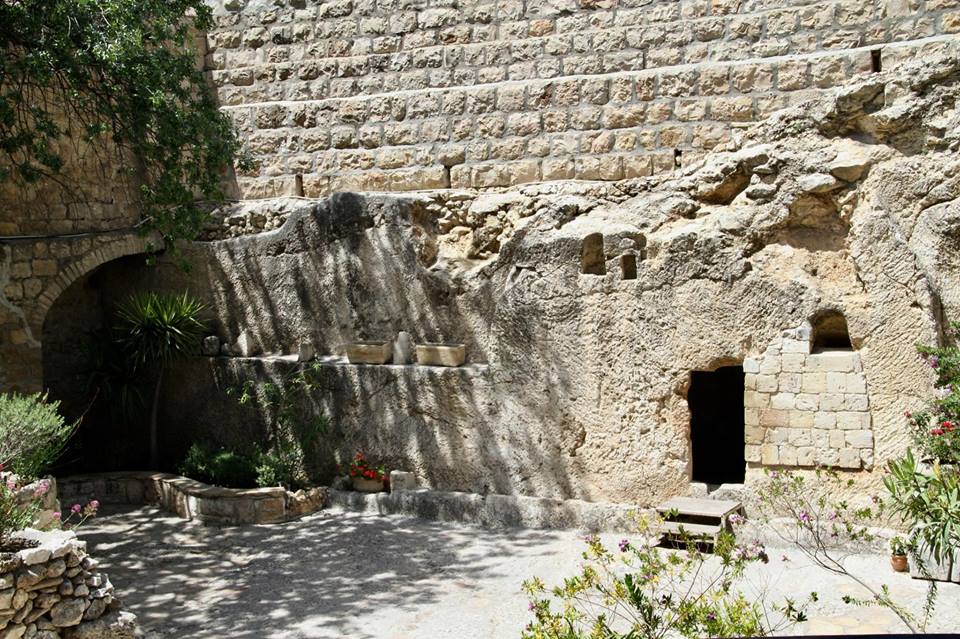
A wine press at Gordon’s Garden Tomb where it is believed Jesus may have been crucified and buried.
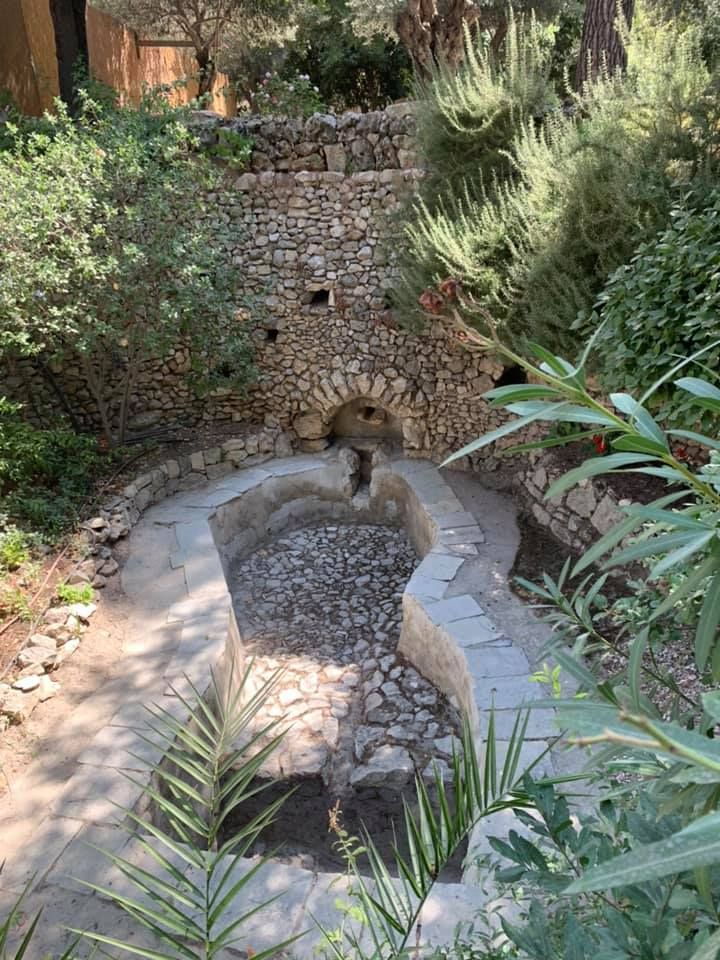
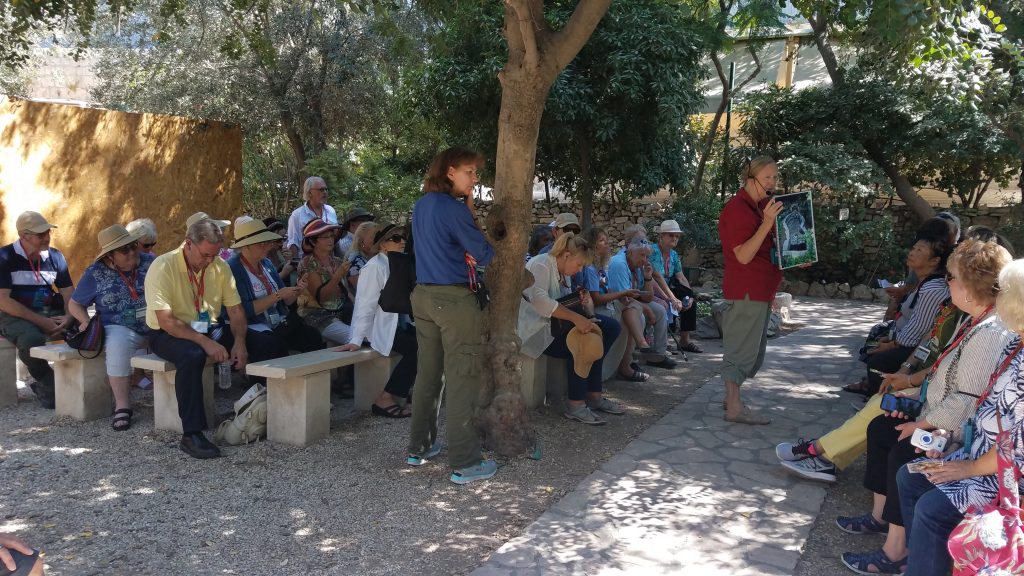
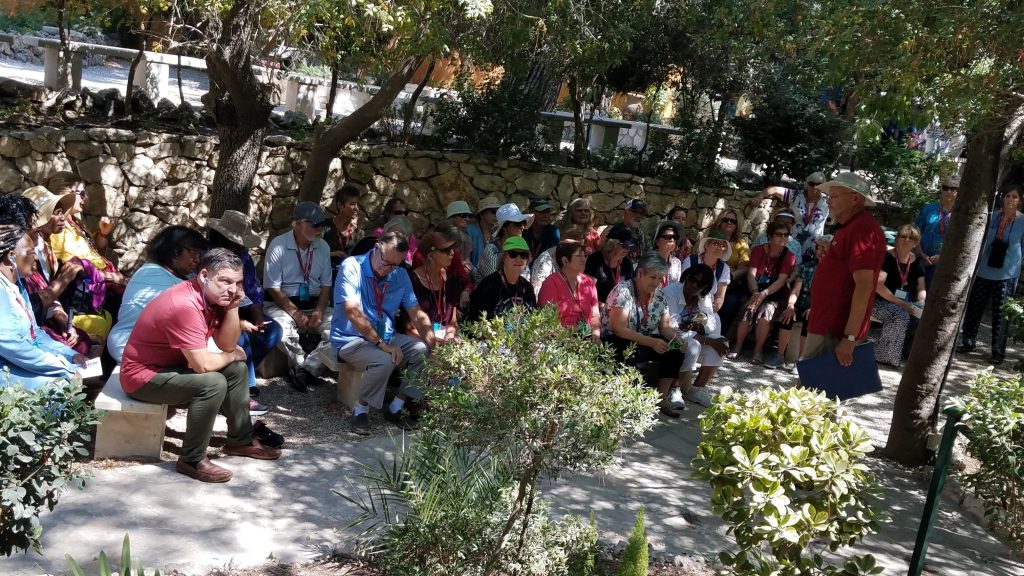
We walked part of the Via Dolorosa to get to The Church of the Holy Sepuluchre.
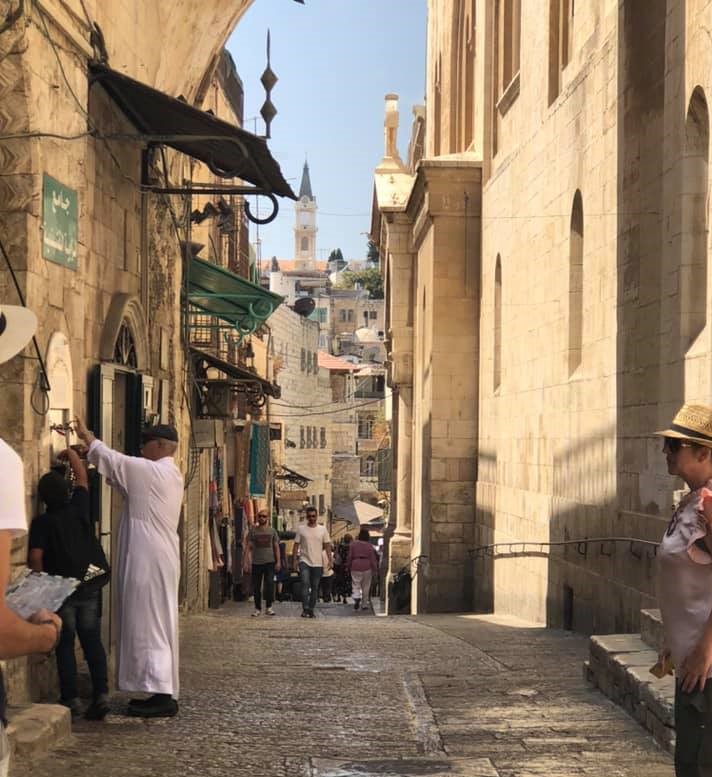
A walk through the shouk, the Hebrew word for market.
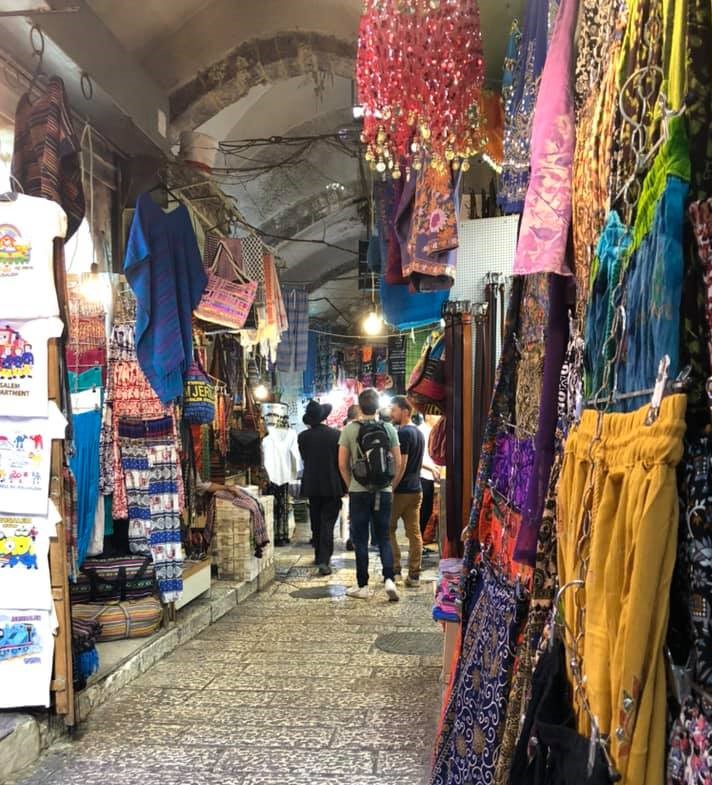
Church of the Holy Sepulcher
Constantine’s mother, Queen Helena traveled to the Holy Land to identify the holy sites. She had churches built over them. This is where it is believed that Jesus was crucified and buried.
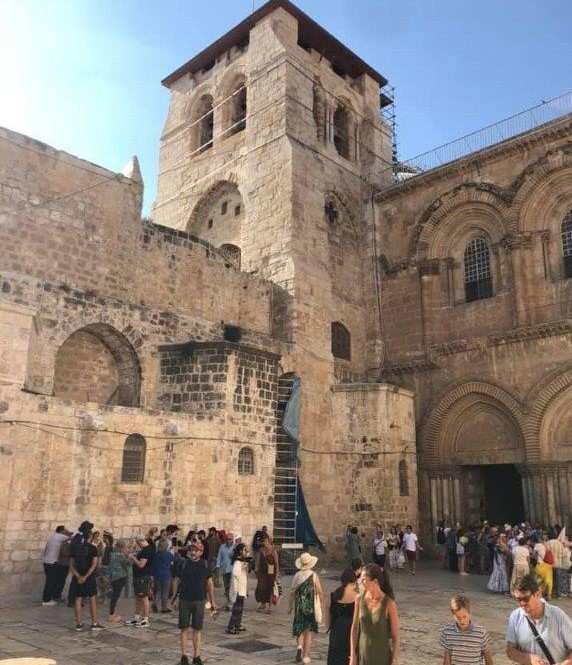
Under an 1852 mandate, the care of the Church of the Holy Sepulchre is shared by no less than six Christian denominations: the Greek Orthodox, Armenian Apostolic, Roman Catholic, Coptic, Ethiopian, and Syriac Orthodox churches. A small section of the roof is disputed between the Copts and Ethiopians. The “immovable ladder” is a centuries-old symbol of this extreme territoriality. During the early 1800s, a man belonging to an unknown sect placed the ladder on a ledge against an exterior second-floor wall of the church. Due to the imposition of the status quo and the fear of inciting violence, no one has dared touch it since. Notice the ladder under the right window
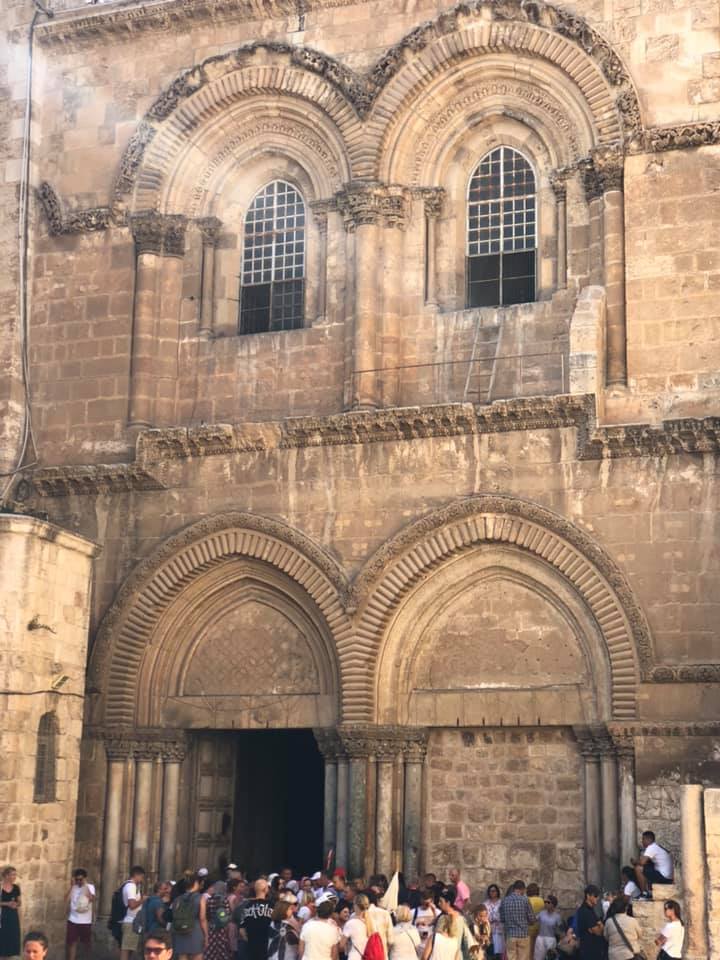
In the Church of the Holy Sepulcher is the stone where they believe Jesus was prepared for burial. People come there and kneel, weep, pray, and kiss the stone in reverence.

Stone believed to be where Jesus was prepared for burial.

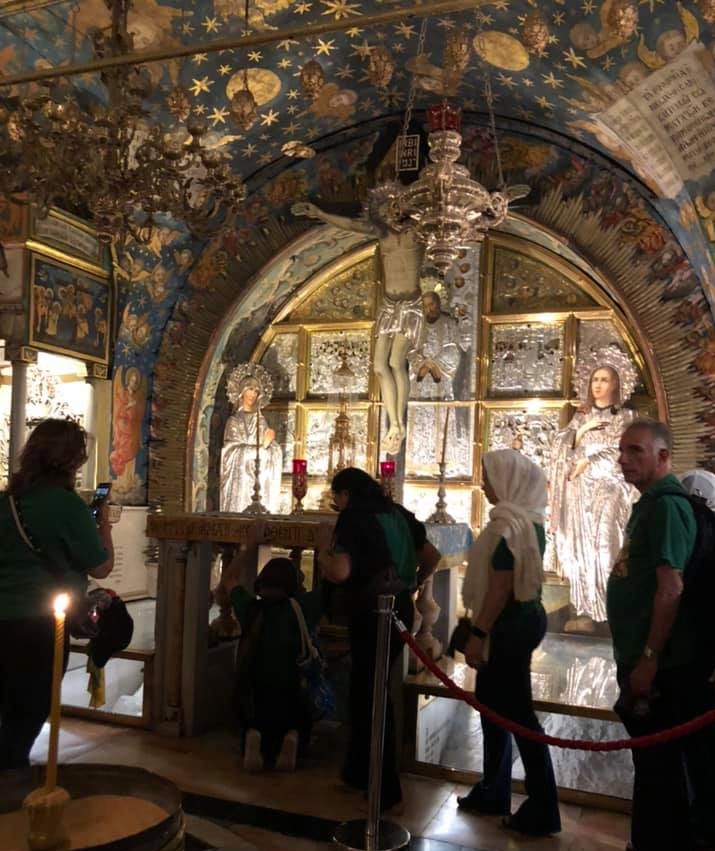
We had a wonderful time of worship in the Upper Room
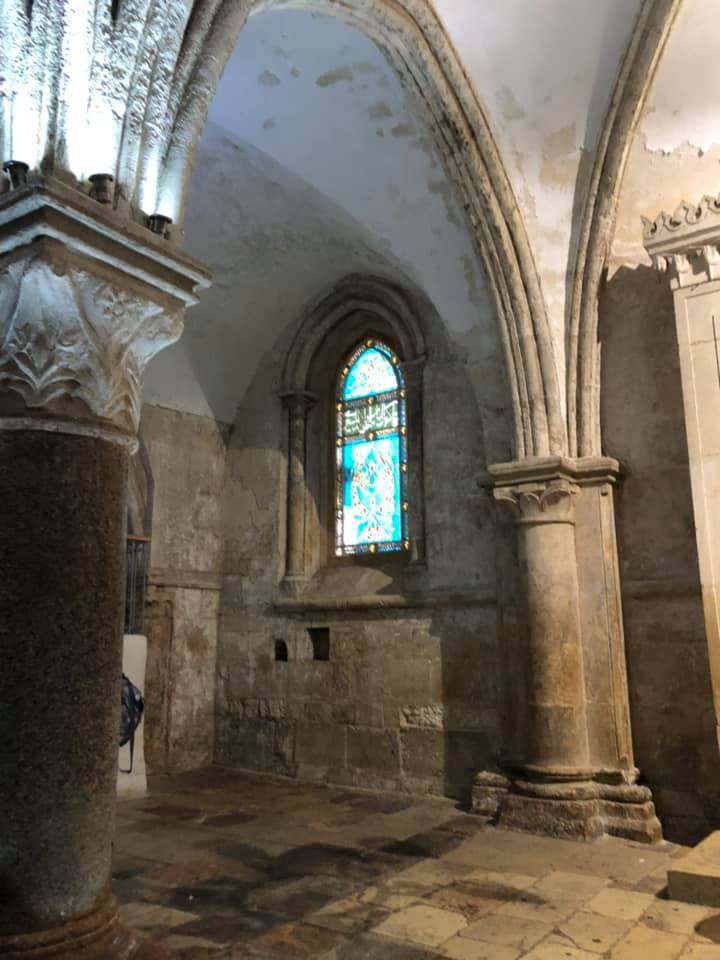
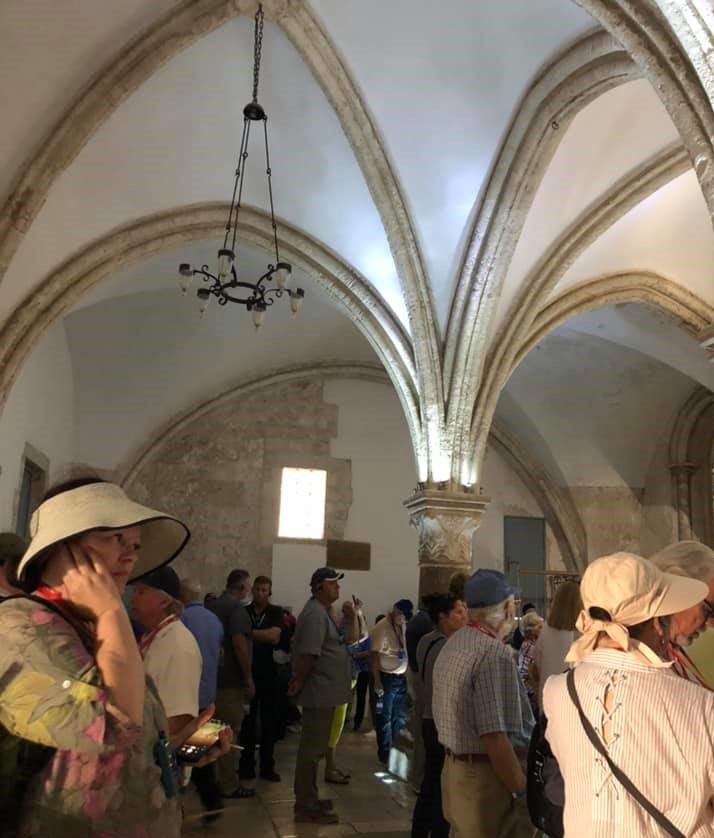
The acoustics are amazing in this room. The unity of the Spirit and the sweet Presence of the Lord –so wonderful!
This video clip gives a panoramic view of the Upper Room.
Below is a photo of a sign describing where the battle for Jerusalem ended. The metal monument honors the men killed defending the Quarter in the War of Independence in 1948.
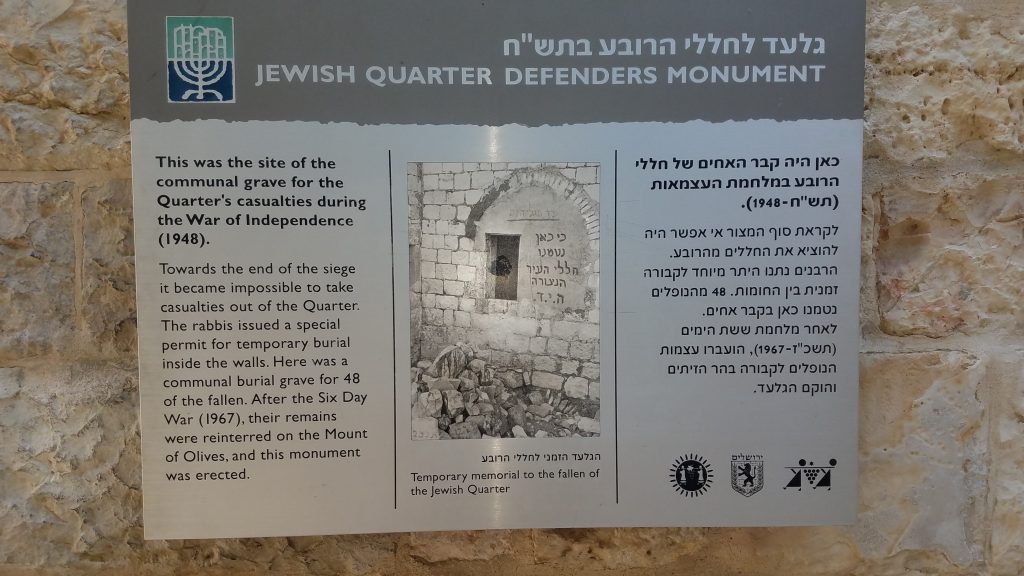
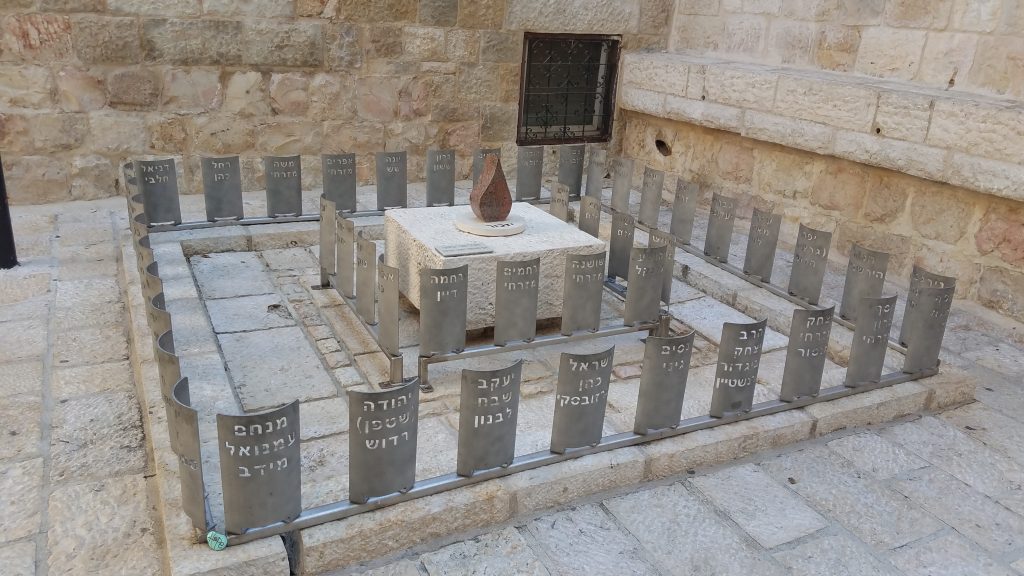
Walking through the Jewish Quarter in Old City today, we came to a courtyard that a boys’ school used for recess. The apartments are built in a square formation so mothers can have an eye on the kids always. There wasn’t an adult in sight, but the boys had no trouble playing peacefully and settling disputes amongst themselves. When a Jewish song played over the loudspeaker, they filed back in by themselves and a new group came out to play.
Many of us prayed for these precious boys.
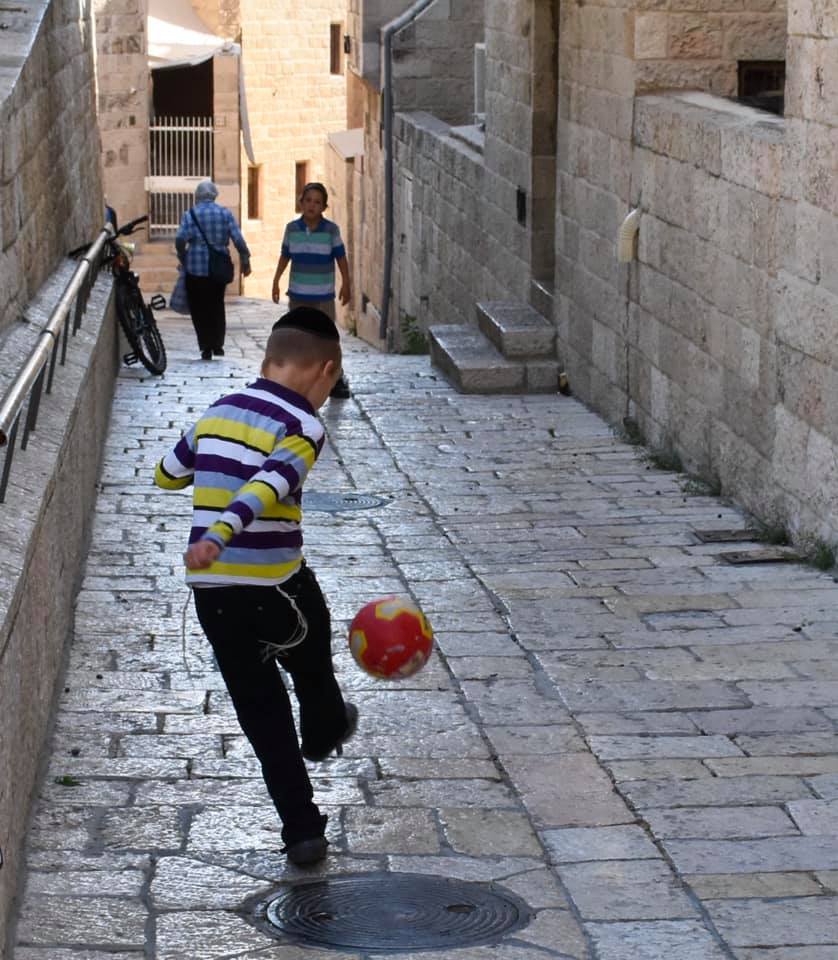
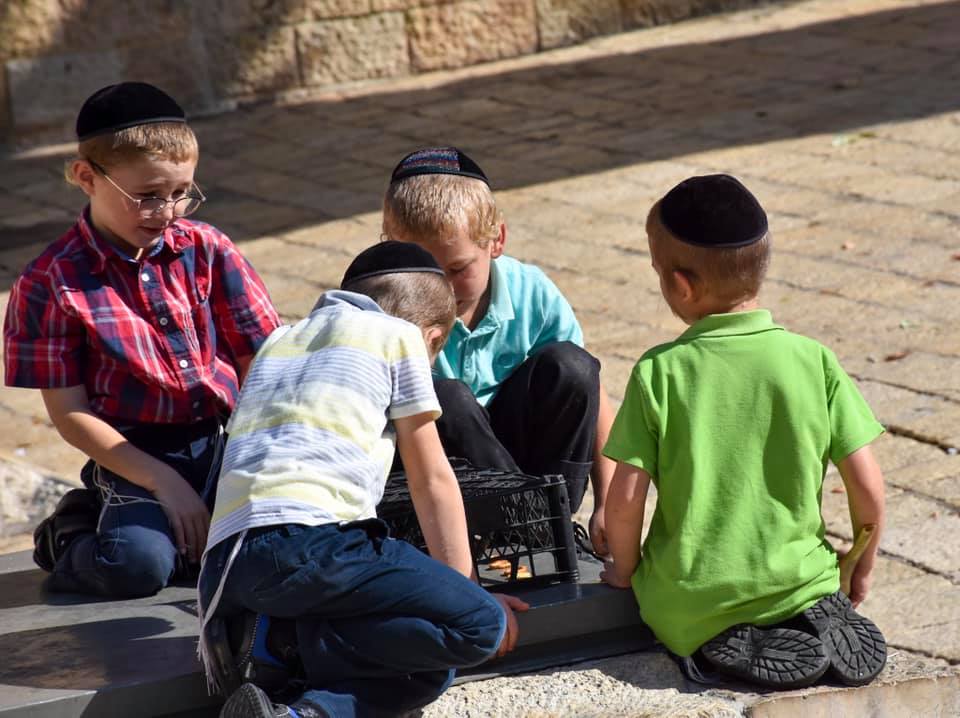
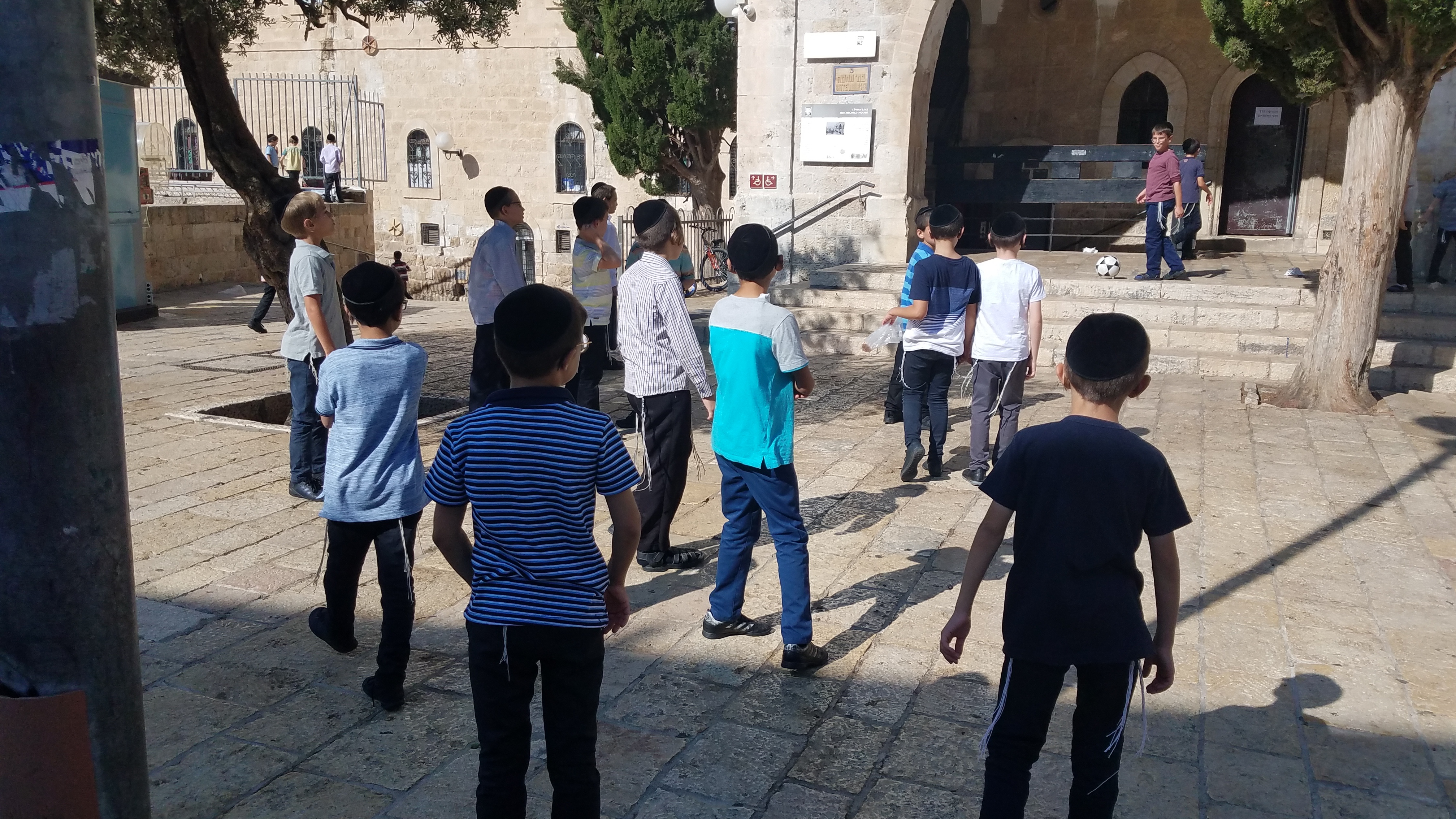
Damascus Gate in the Old City
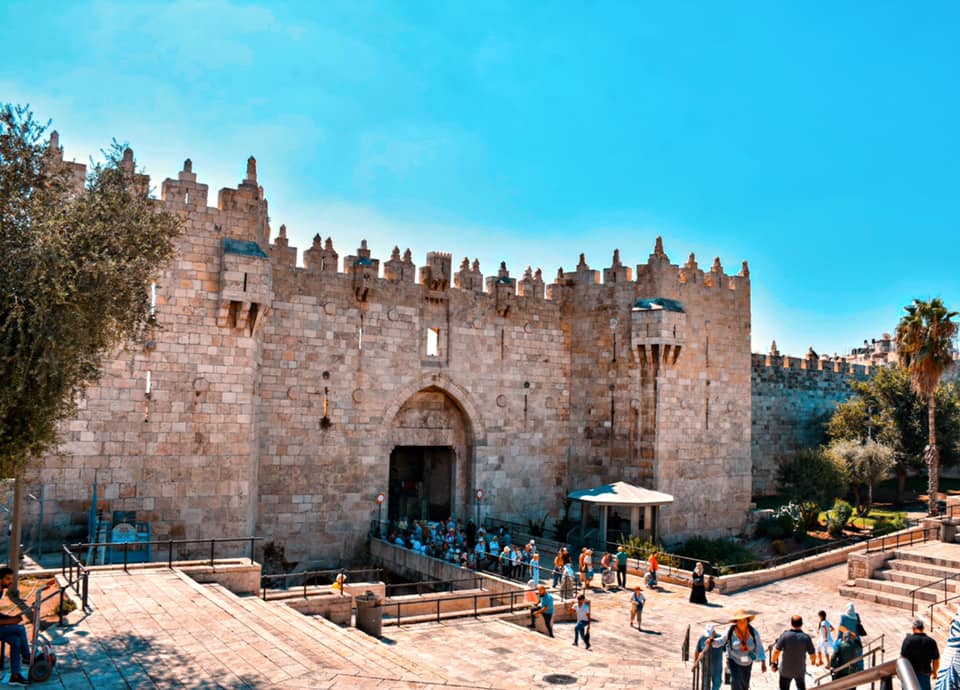
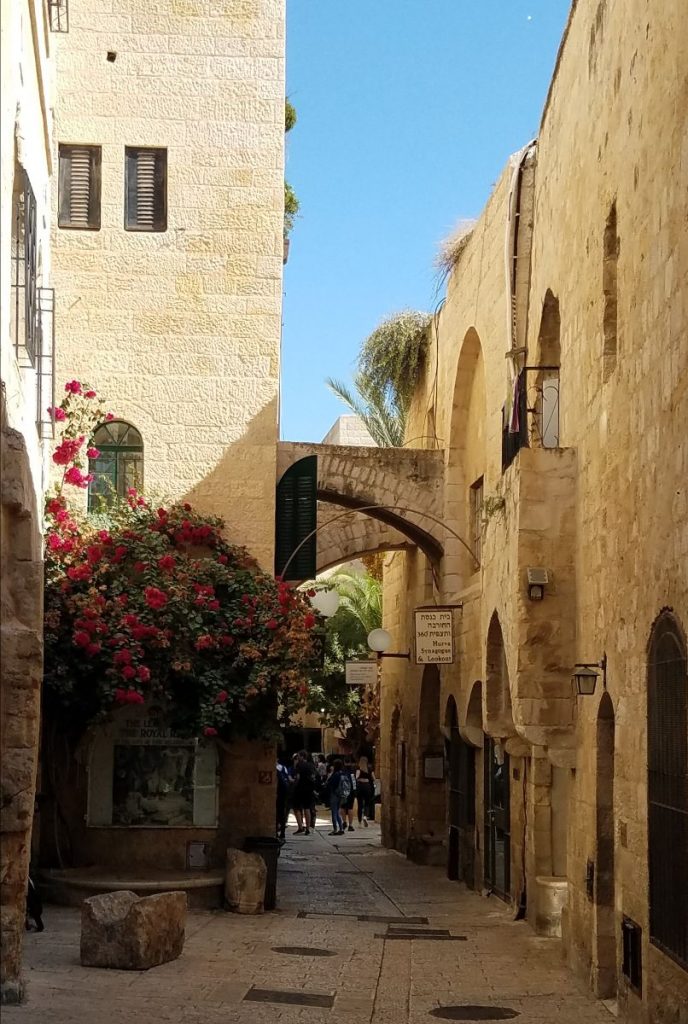
Below – street scenes in Jerusalem
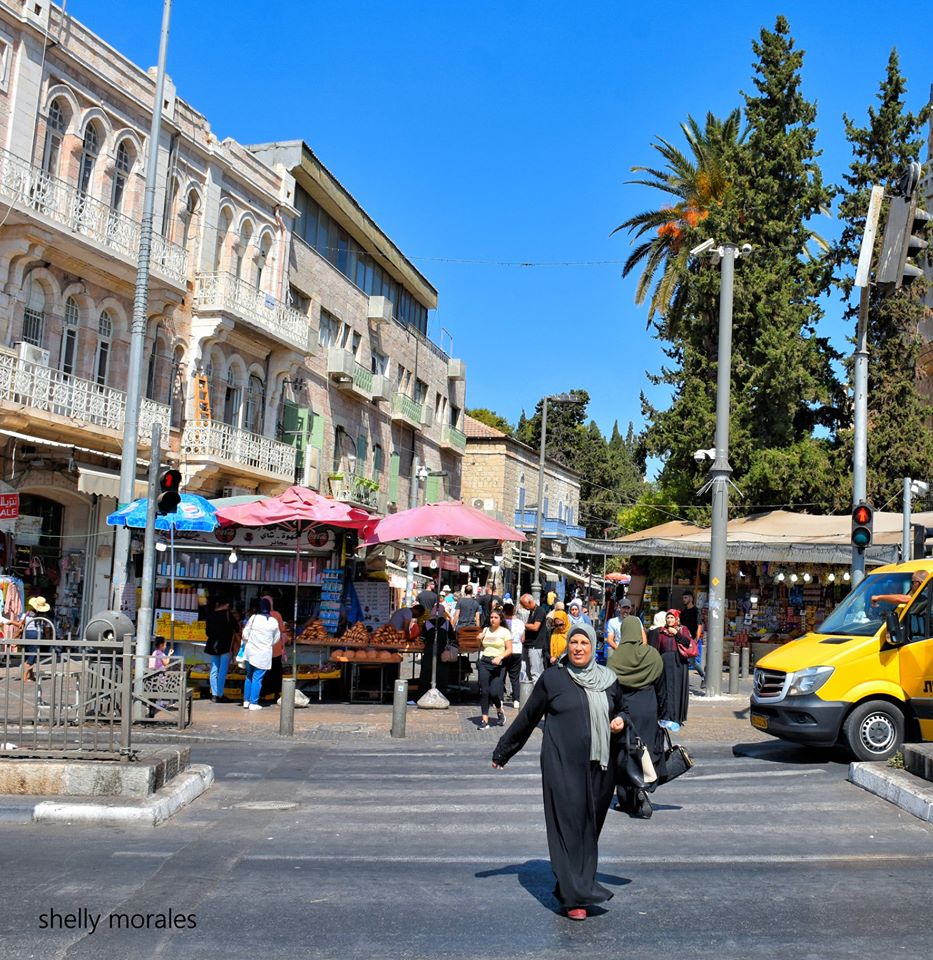
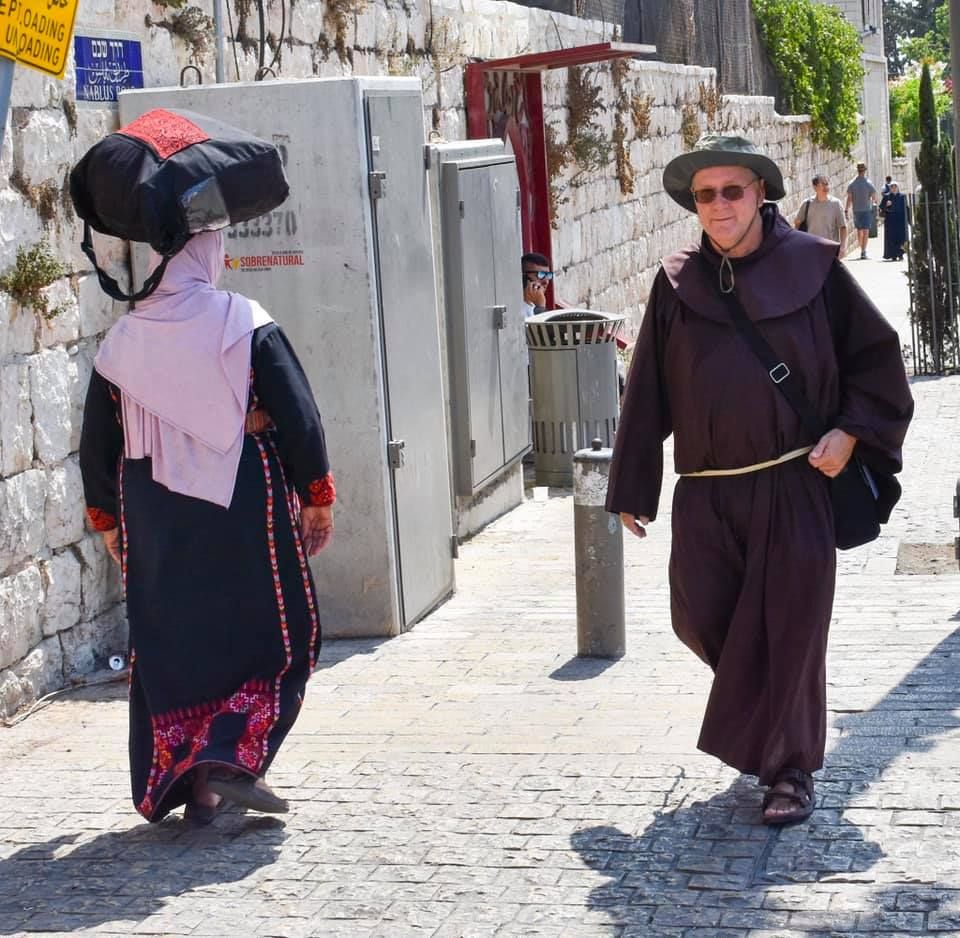
Arab Palestinian women waiting to cross the street near the Damascus Gate.
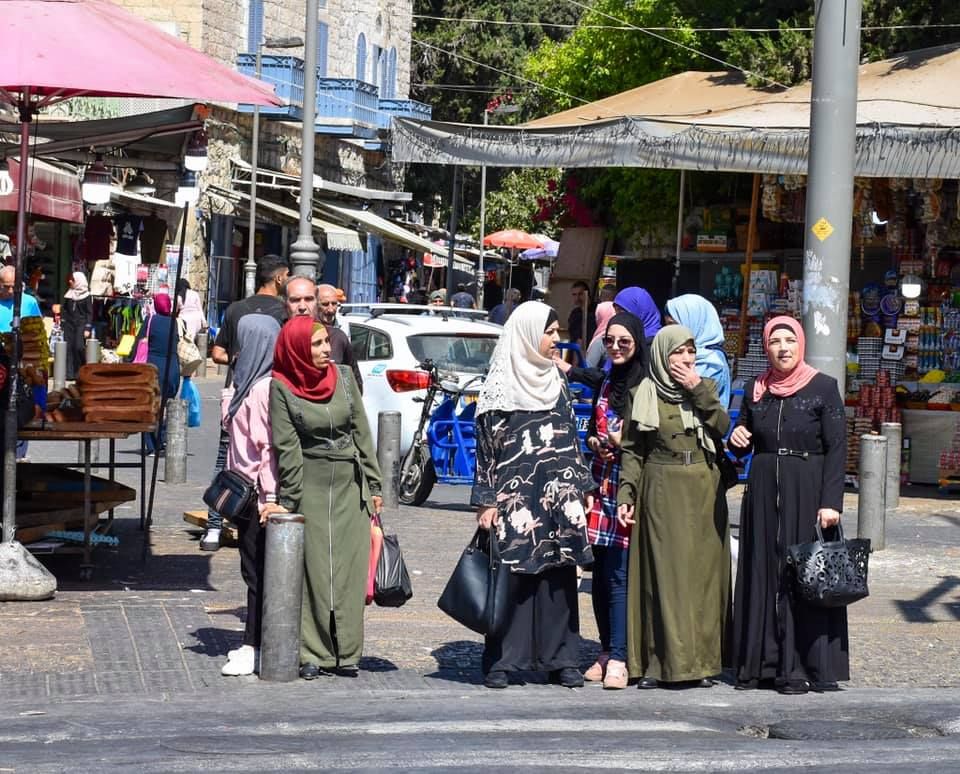
While we were in the Old City some of us had the opportunity to see the
portion of Nehemiah’s wall built 2,500 years ago. It is inside the Jewish
Quarter.
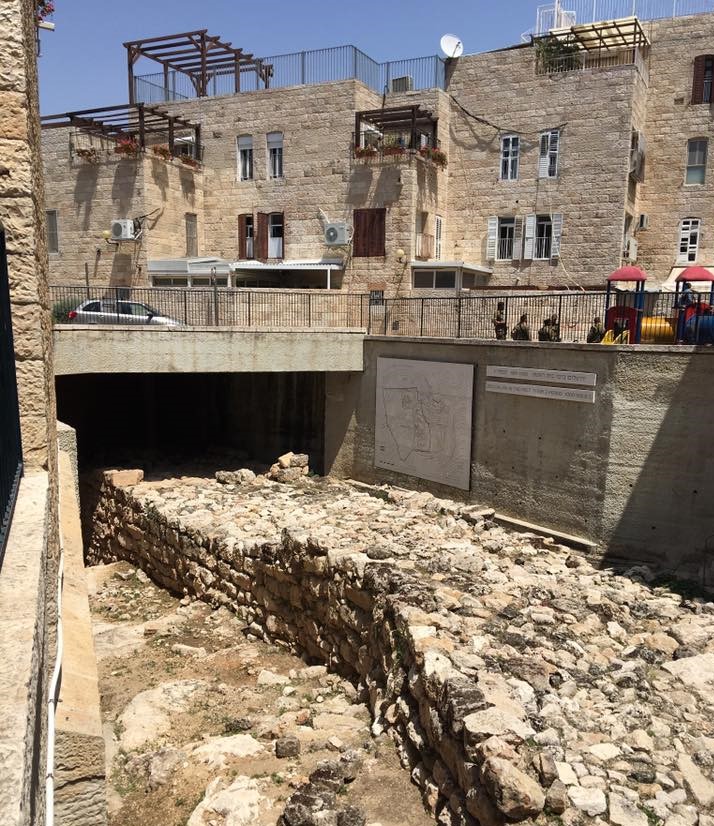
Western Wall
‘The Wall, as it’s often simply called, was once the retaining wall below the plaza of the Second Temple—the only part of the massive structure left standing after Roman armies demolished it in 70 A.D. Also referred to as the Western Wall, Wailing Wall or Kotel (as it is called in Hebrew), it is considered by Jews to be the most sacred site accessible for them to worship at today.
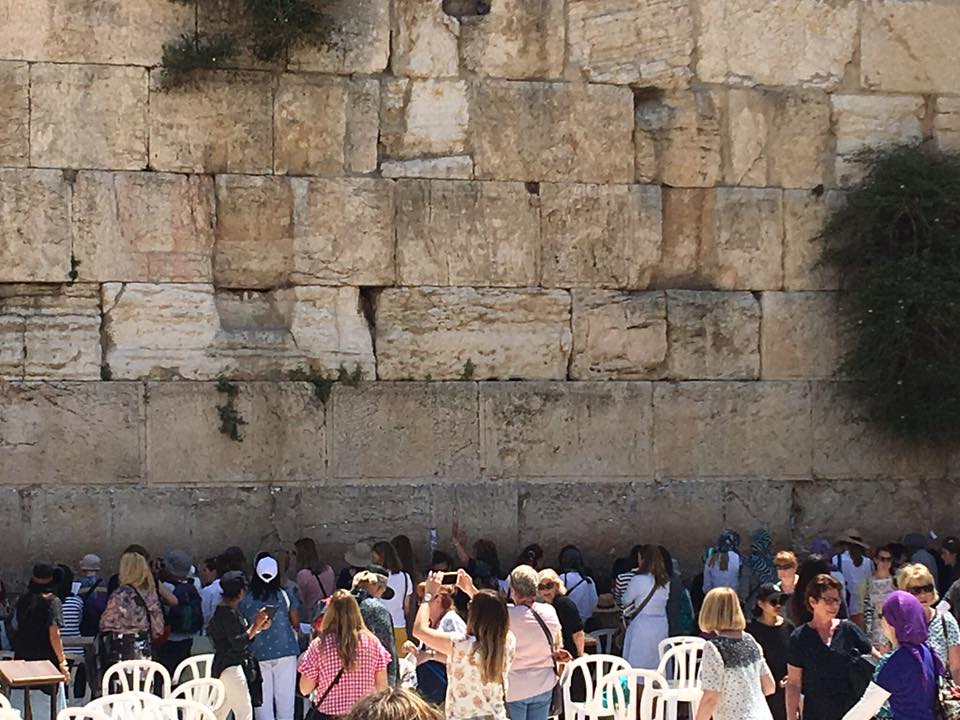
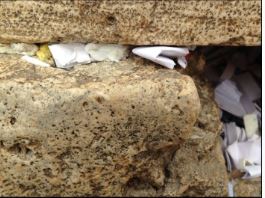
Visiting the Wall is a profound experience. The massive limestone blocks are constantly surrounded by worshipers, many of whom participate in the centuries-old tradition of tucking written prayers into the cracks between the stones. Stepping close, you can see mall slips of paper filling every crevice. Each note represents someone’s voice calling out to God—prayers of adoration, of gratitude, of desperation.
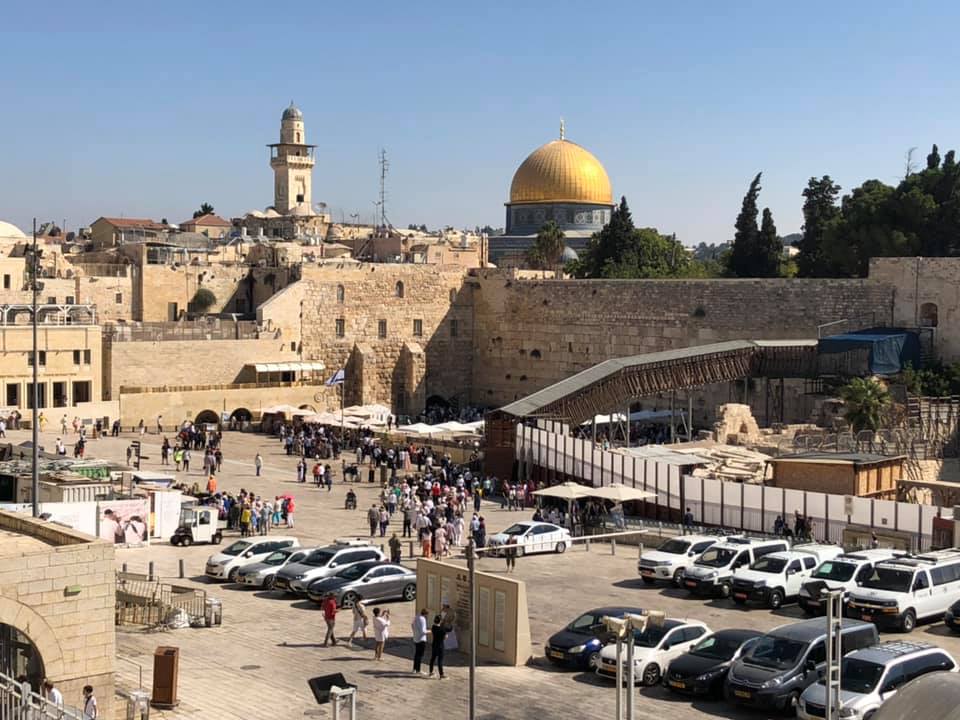

Aglow women praying at the wall.
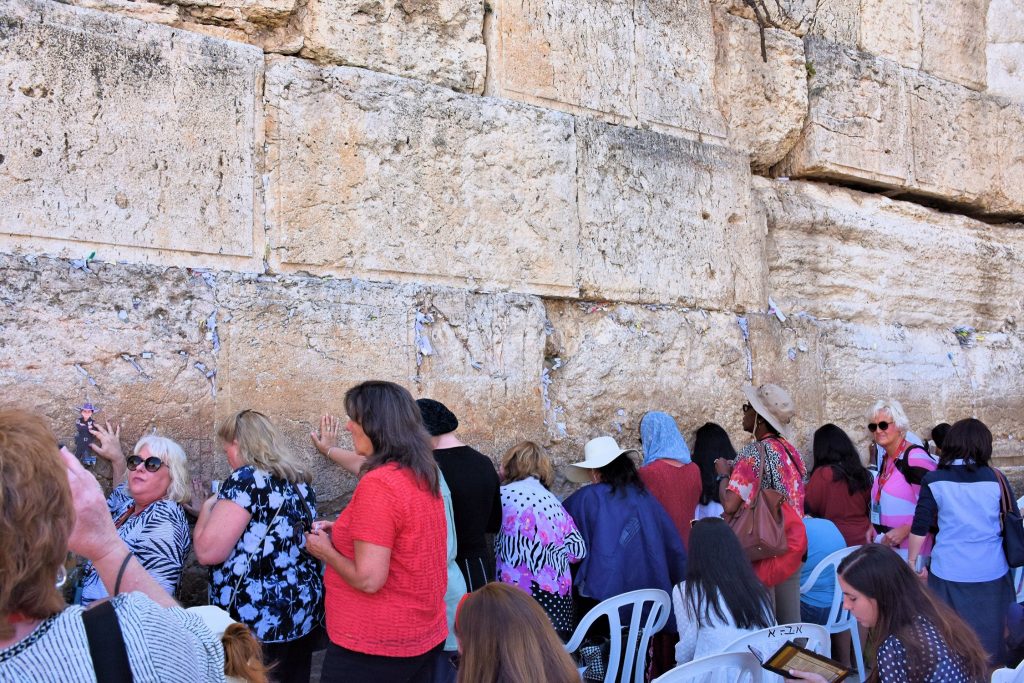
Bar Mitzvahs take place and the women are separate so they are peeking over the barrier to get a peek of their son, brother, cousin, or friend reading his Torah portion.
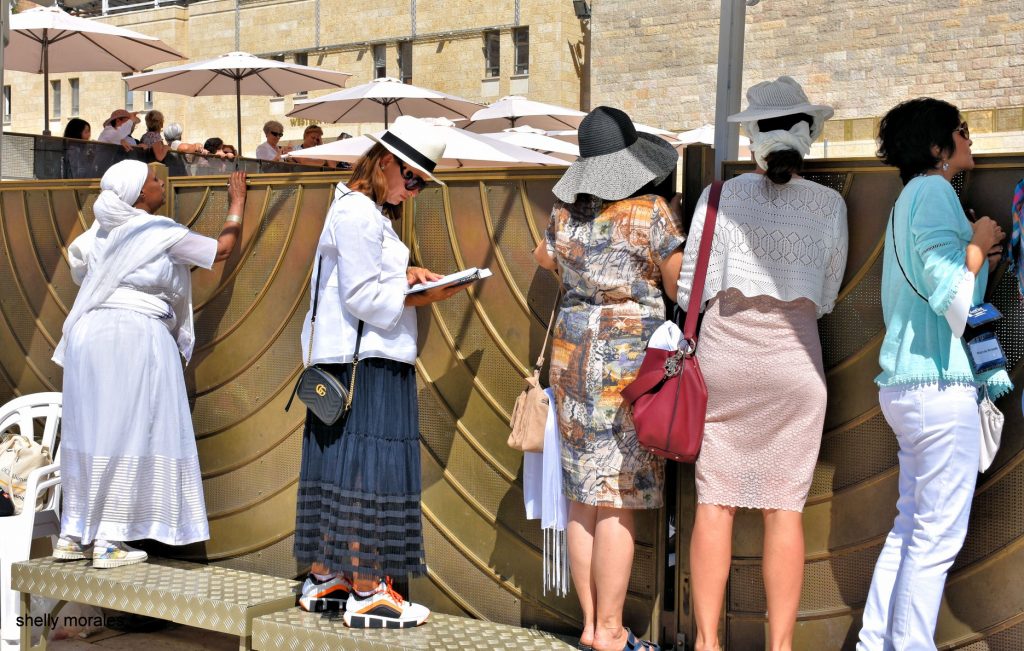
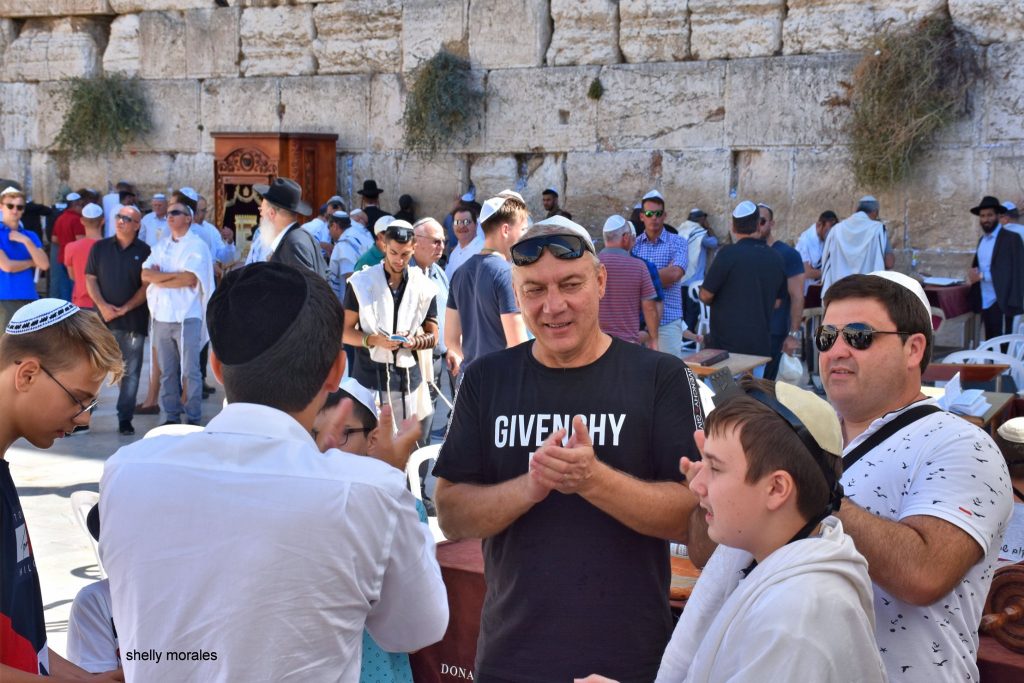
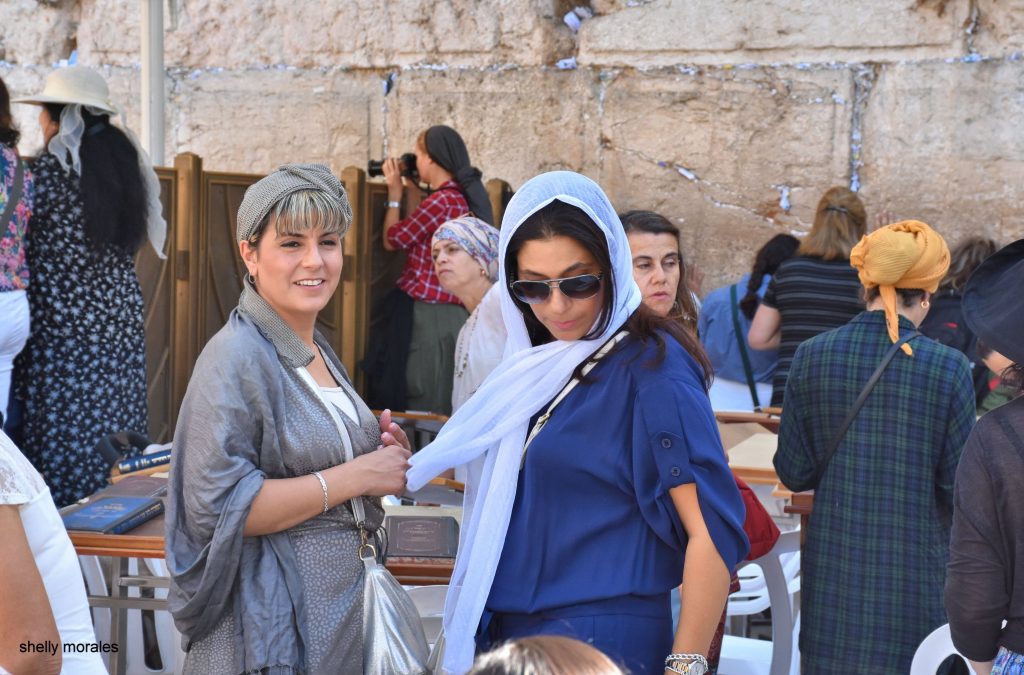
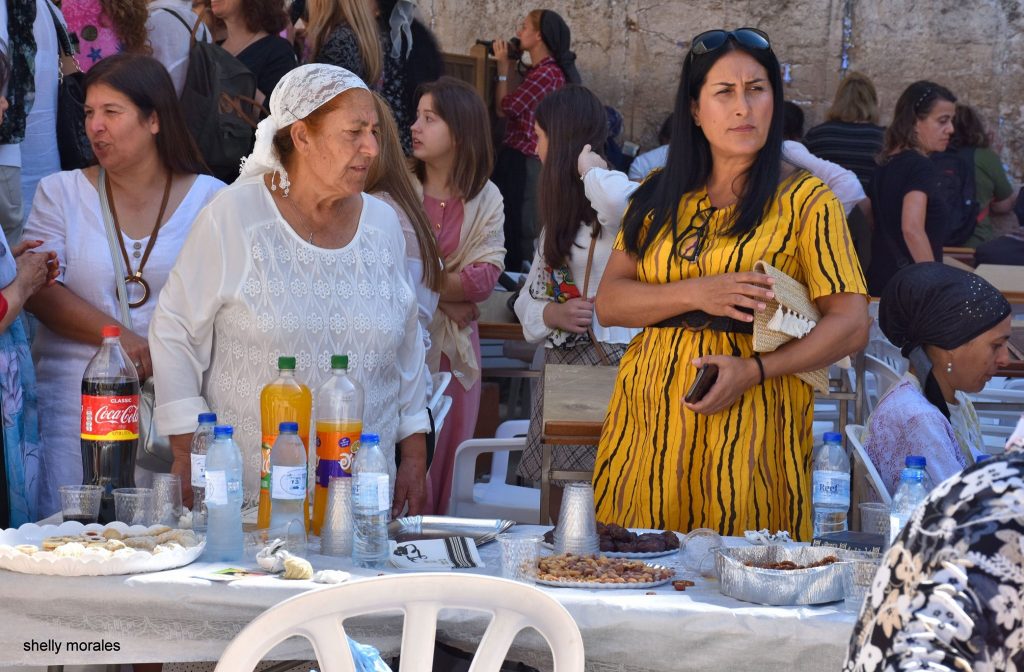
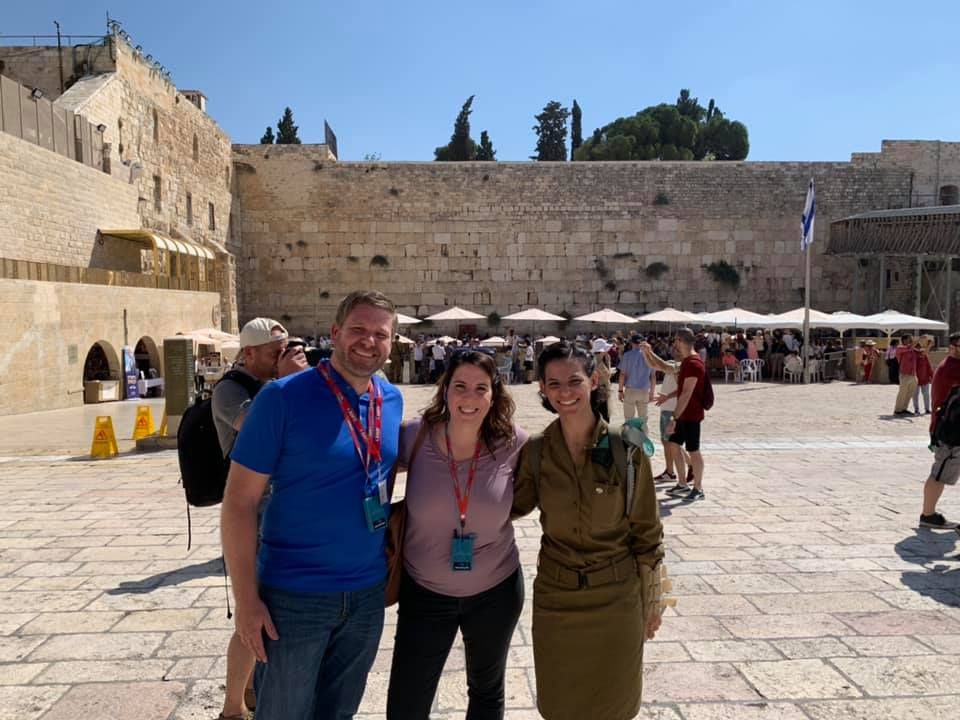
Damascus Gate in the Old City

Haas Promenade
According to Jewish legend, it was from the location of today’s promenade that God showed Abraham where one day his descendants would build their holy city,
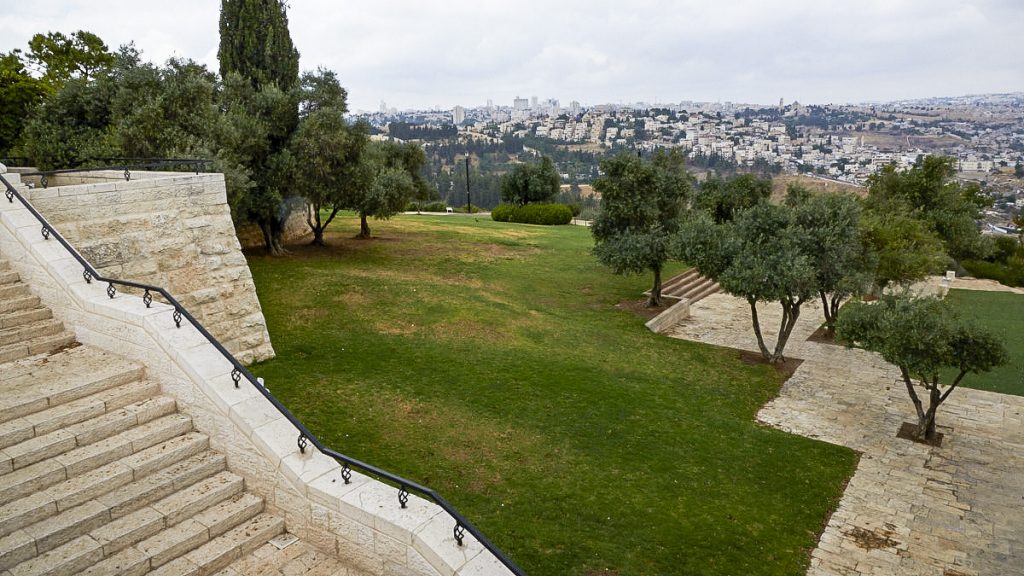
Over 130 people from around the world went through the five intensive workshops that comprise the Watchmen on the Wall Seminar and were commissioned at the Jerusalem Convocation. Click on the video below to hear the commitment that is made here on Mt. Scopus. Sandy Wezowicz, Israel Education Director, led them in making their vows.
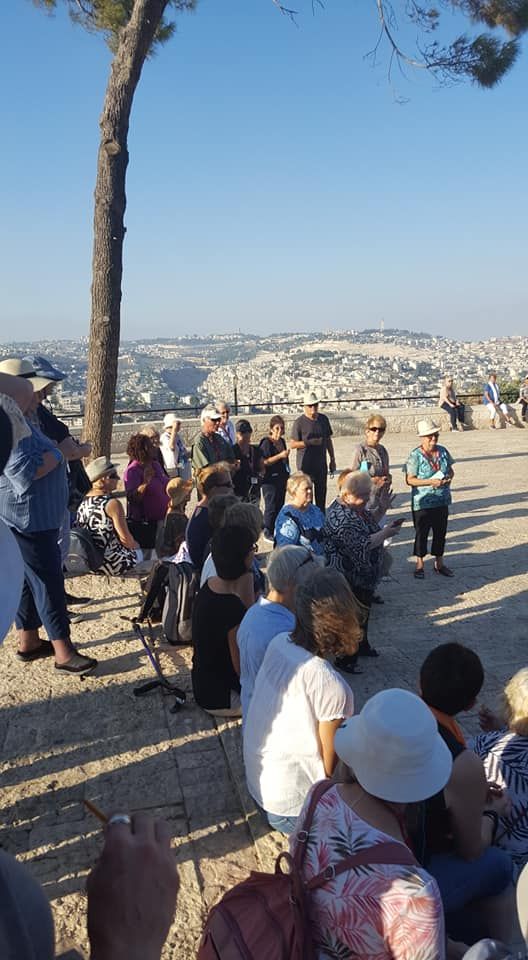
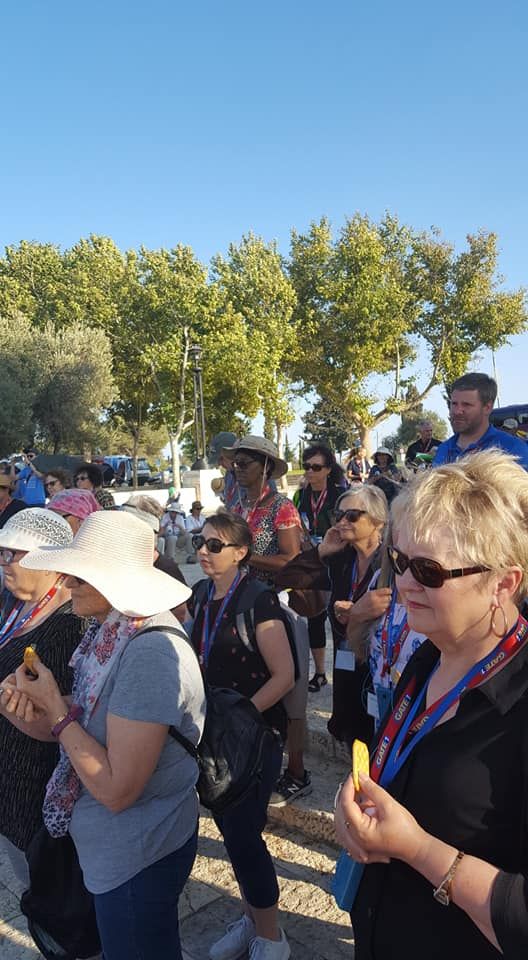
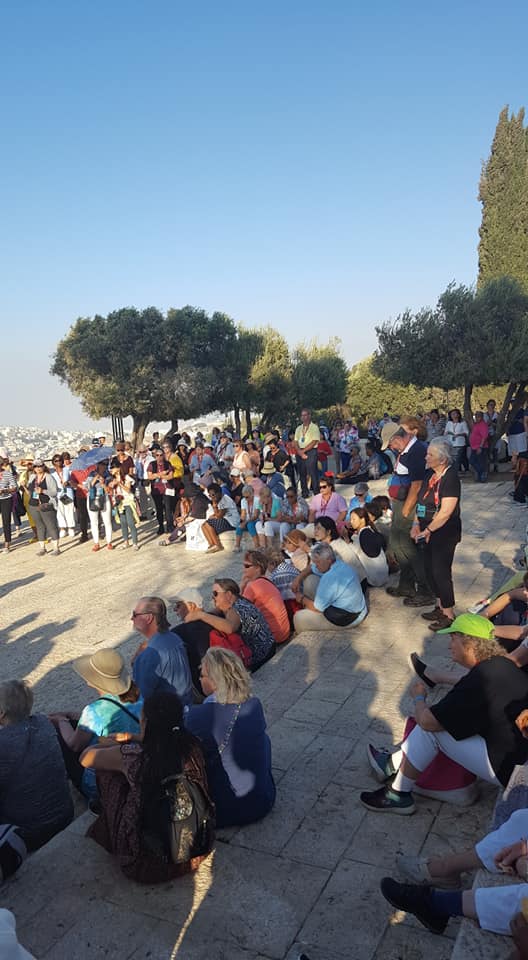
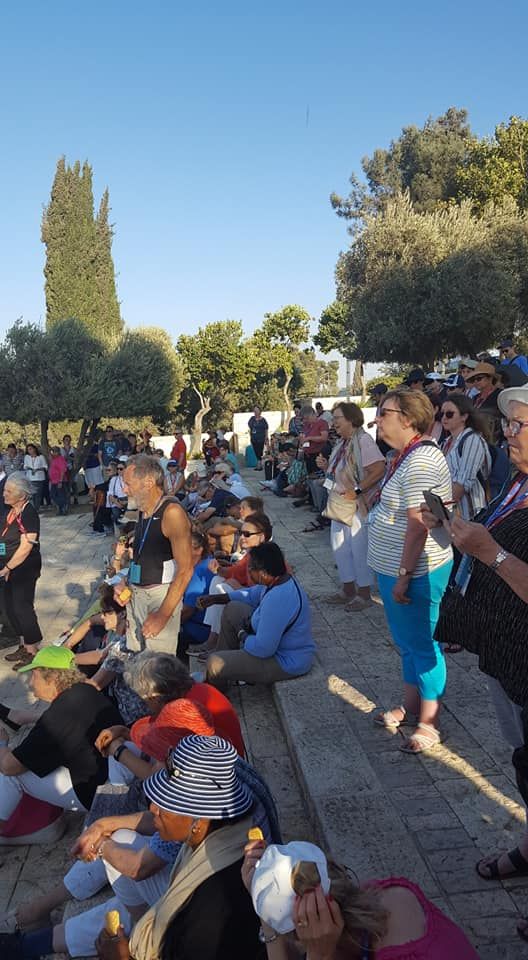

0 Comments